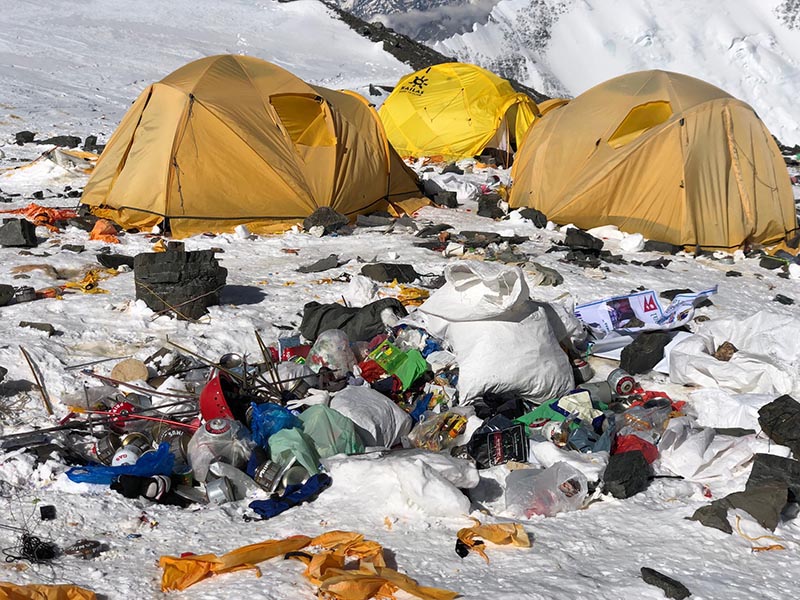Everest's garbage problem
In the Sagarmata area alone, the Nepali name for the world's highest mountain, the accumulation of waste amounts to about five tonnes per day. Environmental conditions complicate regular collection efforts and the increasing number of hikers does not help, but mountaineering alone earns Nepal 10 per cent of its GDP.
Kathmandu (AsiaNews) - The Everest climbing season, between March and May, when conditions are most favourable, is in full swing. Despite the limits already imposed, the authorities and organisations involved in the protection of the area fear, however, that this year too the environmental consequences will be severe, especially with regard to the accumulation of waste.
The climbers' stay in the various camps around and above the mountain takes an average of two months, the time needed for approach and acclimatisation. In the area of Sagarmata alone, the Nepalese name for Everest, the accumulation of waste is around five tonnes per day.
This mainly consists of cans and plastic bottles, but also of human and animal excrement, which, in the areas close to the climbing and camping routes, create veritable dumps that cause an inevitable spread of toxic elements into the soil and water. Experts have found high levels of toxicity in melt waters used for agriculture and livestock farming, but also deep in glaciers, which are already under attack from global warming.
Sixty thousand mountain enthusiasts enter the National Park area and the Sagarmata buffer zone every year for various reasons. The mountain is located in the north-eastern Khumbu region, where, in addition to the highest peak in the world, there are six other high mountains that attract climbers. Between 400 and 500 each year attempt the ascent to the summit of Everest. The economic benefits of high altitude hiking earn Nepal four billion dollars, 10% of GDP.
But as the number of ascents has increased since the 1980s, so has the waste. Three elements make the mountain's coexistence with a mass of visitors intolerable for the fragile ecosystem problematic: the number and above all carelessness of trekkers and climbers; the difficulty of disposal at the local level, starting with the lack of septic tanks and collection facilities; and rules that seem to incentivise environmentally unfriendly behaviour.
Moreover, the difficult environmental conditions do not favour periodic clean-up initiatives by Sherpas and environmental groups, and also make the recovery of missing climbers and the remains of those who have died complicated.
The concession to those who have paid up to 80 thousand dollars to be able to attempt the Everest conquest experience imposes the withholding of 4 thousand dollars deposited in advance if the obligation to bring the waste back downstream and deposit it in designated centres is not respected. But only 22 tonnes of waste are taken to designated dumps each year.
The combination of Nepal's economic needs and the pressure of a large number of visitors who are not always experts or educated in environmental protection, with benefits once enjoyed by local populations that seem to have become an incentive for Sherpa migration, is leading to the breaking point, and the situation clearly shows the need for a profound revision of the priorities and methods of exploitation of Everest and in general of the areas in the shadow of the eight-thousanders.
26/08/2022 11:13







.png)










